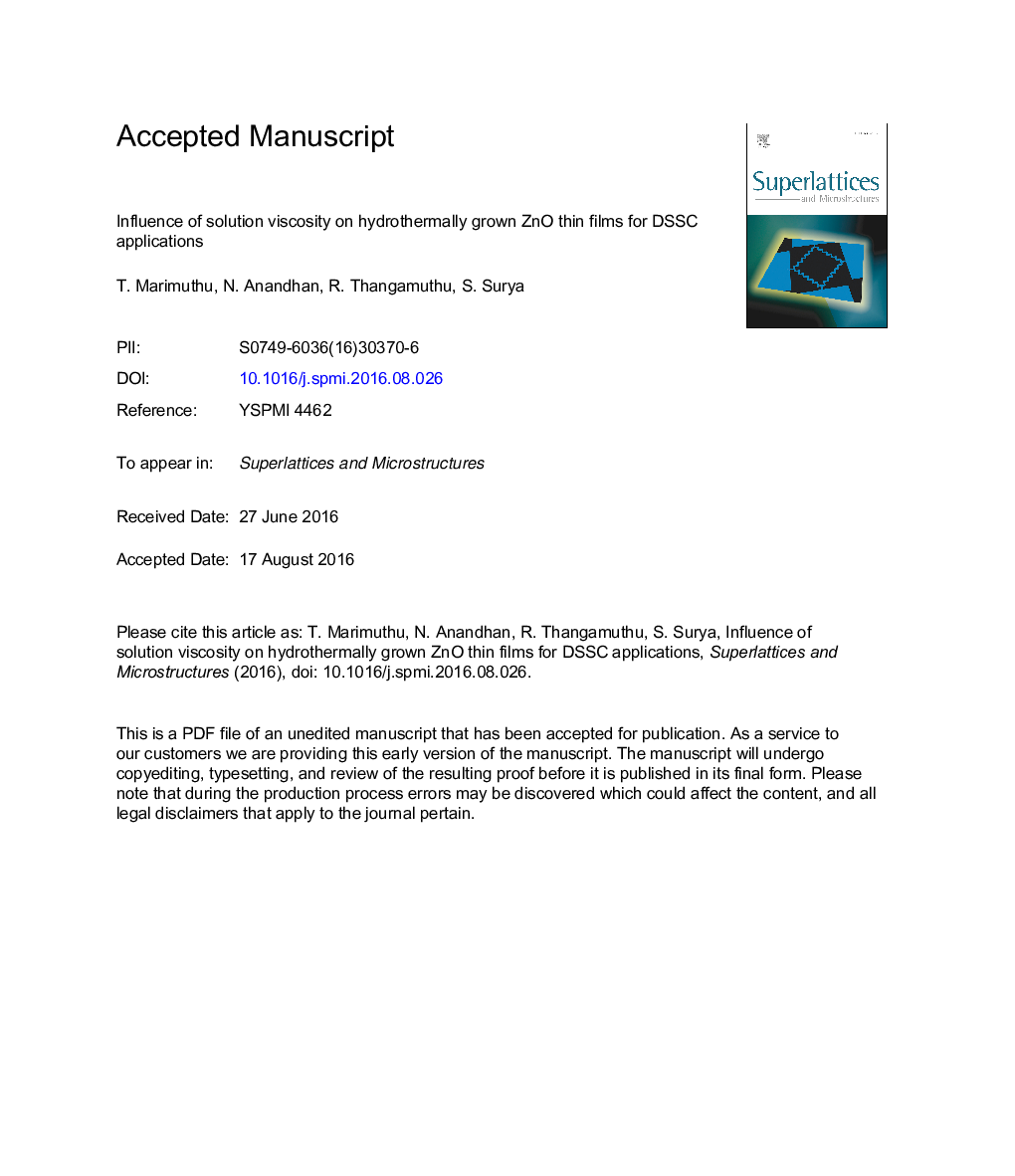| Article ID | Journal | Published Year | Pages | File Type |
|---|---|---|---|---|
| 7941952 | Superlattices and Microstructures | 2016 | 30 Pages |
Abstract
Zinc oxide (ZnO) nanowire arrays (NWAs) were grown onto zinc oxide-titanium dioxide (ZnO-TiO2) seeded fluorine doped tin oxide (FTO) conductive substrate by hydrothermal technique. X-ray diffraction (XRD) patterns depict that ZnO thin films are preferentially oriented along the (002) plane with hexagonal wurtzite structure. Viscosity measurements reveal that viscosity of the solutions linearly increases as the concentrations of the polyvinyl alcohol (PVA) increase in the growth solution. Field emission scanning electron microscope (FE-SEM) images show that the NWAs are vertically grown to seeded FTO substrate with hexagonal structure, and the growth of NWAs decreases as the concentration of the PVA increases. Stylus profilometer and atomic force microscopic (AFM) studies predict that the thickness and roughness of the films decrease with increasing the PVA concentrations. The NWAs prepared at 0.1% of PVA exhibits a lower transmittance and higher absorbance than that of the other films. The band gap of the optimized films prepared at 0.0 and 0.1% of PVA is found to be 3.270 and 3.268Â eV, respectively. The photo to current conversion efficiency of the DSSC based on photoanodes prepared at 0.0 and 0.1% of PVA exhibits about 0.64 and 0.82%, respectively. Electrochemical impedance spectra reveal that the DSSC based on photoanode prepared at 0.1% of PVA has the highest charge transfer recombination resistance.
Related Topics
Physical Sciences and Engineering
Materials Science
Electronic, Optical and Magnetic Materials
Authors
T. Marimuthu, N. Anandhan, R. Thangamuthu, S. Surya,
